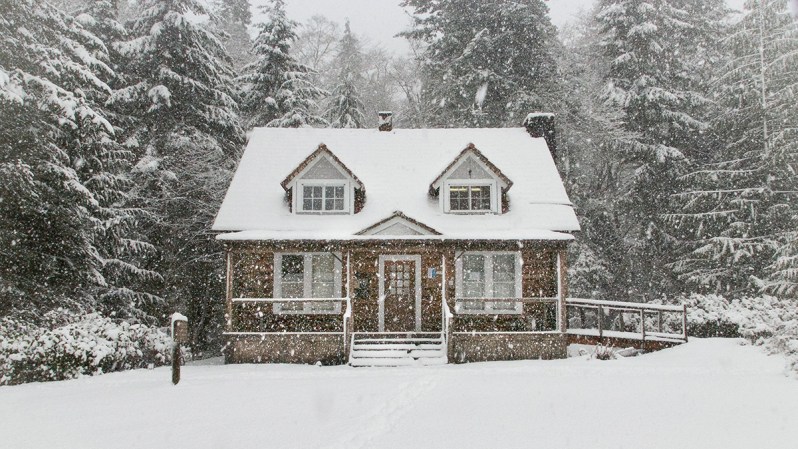
As the cooler weather sets in and the long pants and fuzzy socks come out of the drawers to replace the shorts and sandals of the bygone summer, it’s a good idea to spend a weekend or a few afternoons preparing your property for winter. The snow, ice, and general cold weather can affect your yard and residence in myriad ways, but with proper preparation the ol’ homestead will come through the hibernal months just fine.
Winterizing a home protects against damage from burst pipes or faulty gutters, maximizes the efficiency of interior temperature control and minimizes HVAC expenses by reducing heat loss, and helps the lawn, shrubs, trees, and other flora weather the cold season and spring back to life next, um, spring.
Here’s a quick summary of steps you can take to winterize your home and garden, followed by a deep dive into all the details.
- Get the right tools to care for your lawn and garden.
- Check furnaces and filters for any issues and seal any air leaks or gaps around windows and doors. Consider adding more insulation to your attic or uninsulated exterior walls.
- Clean out gutters and flush exterior pipes, drains, and sprinkler systems to prevent freezing (and bursting) pipes.
- Prepare your lawn, shrubs, bushes, and hedges by trimming, mulching, and wrapping more delicate plants in burlap if necessary.
- Trim trees of dead limbs and branches and add mulch to their bases to conserve moisture during typically dry winters.
The Tools
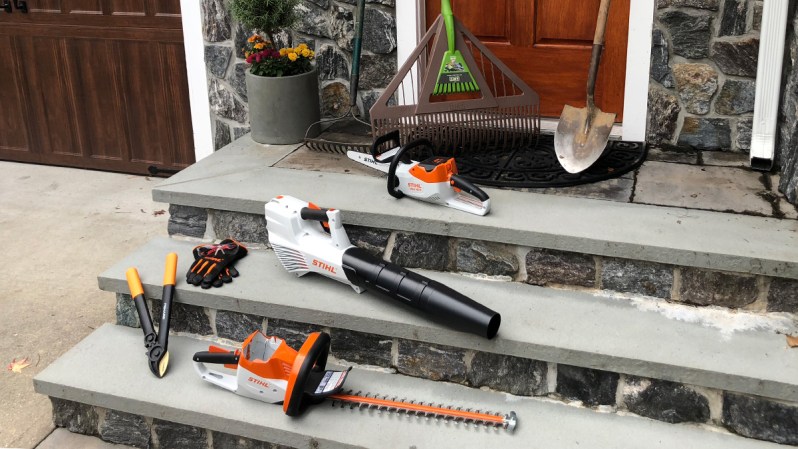
Before you set out to winterize your yard, gather together your tools. Assuming you have an average-sized yard with the stuff one expects from an average American average-sized yard, the gear listed here should be all you need.
A ladder and lawn mower will be critical, as will a shovel, pruning shears, a hedge trimmer, a blower, and likely a good saw. Oh, and a rake. You’ll need a rake. Or two.
When it comes to yard work, this year I’ve almost 100-percent converted to battery-powered tools, which are lighter than gas-powered tools and have a freedom of motion of which corded electric tools can only dream. I use a hedge trimmer, blower, and chainsaw from STIHL, and they are as powerful as any plug-in electric I’ve tried. I still use my trusty gas-powered lawn mower, though. And my shovel and rake are still manual.
For interior winterizing, you’ll also want to look into getting yourself weather stripping or caulk or silicone, pipe insulation, regular insulation, and a smart thermostat.
One last note here: gloves and protective eyewear also belong on your gear list, along with a bucket. You’ll always find a use for a good bucket.
Keeping It Warm and Cost Effective
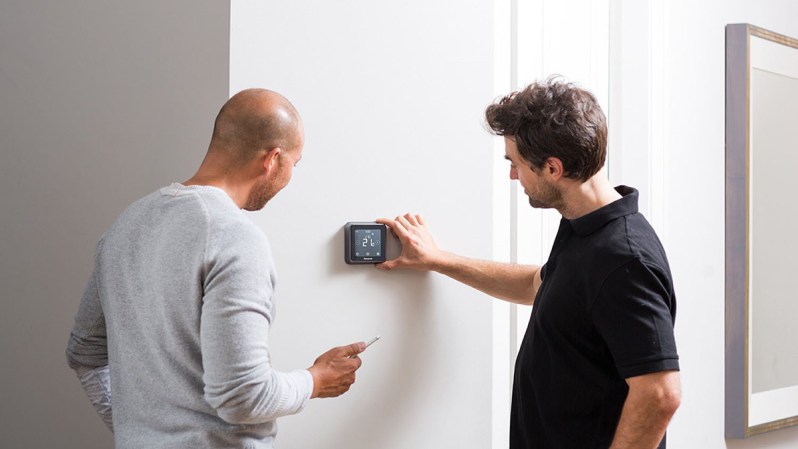
Heating is probably going to be your biggest expense when it comes to electric bills during winter, but you can minimize the sting of the cold and its accompanying costs if you put in the time and effort. First, make sure your furnace is in good working order and that all filters are clean and clear. Every two or three years, hire a professional to inspect the system and clean the ducts. This not only increases efficiency, but also eliminates a ton of dust, debris, and other germs that would normally go airborne the first time you fire up that furnace for the winter season.
And as you get the furnace ready, take care of your AC system, too. Drain away any water that has collected under or in the pipes of condensers and then cover the units up for the season to keep snow and debris from fouling the hardware.
Next, look for air leaks around windows and doors (and around AC wall units) and seal them as needed with weather stripping, caulk, or silicone. Don’t forget about leaks in attics, basements, and crawl spaces, too. How to detect a leak? Try using the nerves conveniently built into your body first, simply holding your hand near window and door frames. You can also use a thermometer to detect notable changes in temperature or hold a candle near a suspected leak and see if it flickers. And close the flue in your fireplace except when, y’know, you’re having a fire.
If you have a programmable thermostat, set comfortable temperatures for the times you’re home and awake and for a colder interior when you’re away or asleep. Finally, reverse your ceiling fans so they blow upward, which will circulate warm air hovering near the ceiling back down into the room.
And if you’re of the “spend money to save money” mindset, buy additional insulation for your attic, for your water heater, for hot water pipes, and for air ducts. The heat loss you’ll prevent will mean markedly less power consumption and will pay for itself, albeit likely over the course of few winters.
Pipes and Gutters
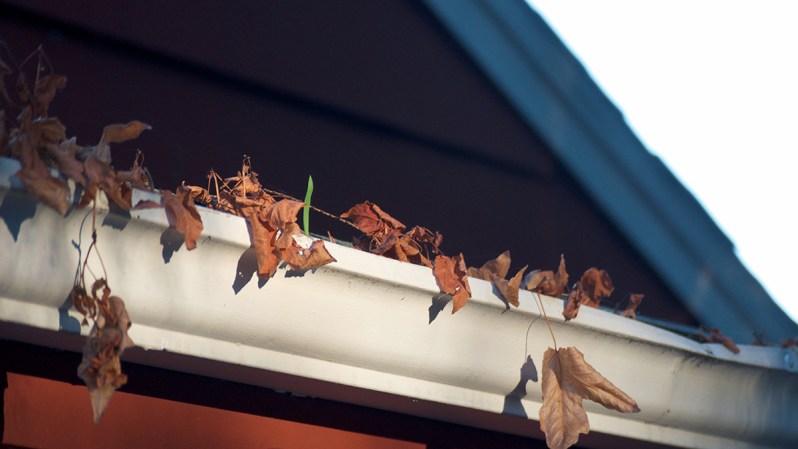
If you’re only going to do two things to winterize your residence, then it should be properly servicing water pipes and gutters. You need to completely drain and then shut off any exterior pipes, including spigots that feed hoses and/or entire in-ground sprinkler systems, or the water left in the pipes will freeze, expand, and likely cause ruptures, which can in turn lead to flooding.
And you have to clean the gutters, sir! Or hire someone to do it for you, or make your kids do it if you have some and they can safely climb a ladder. If your gutters are clogged, they will back of with snow and/or water which can then freeze. This can damage the gutters themselves, but worse still it can lead to ice dams, a build up of ice along the edge of your home behind which water pools and then under which it seeps. Rather than being ushered away from the home by the gutters, this water leaks down into the home, often between walls where it will long go undetected, and where it can damage building materials, create discoloration and stains, and lead to mold issues.
Now, let’s talk about your yard.
Lawn
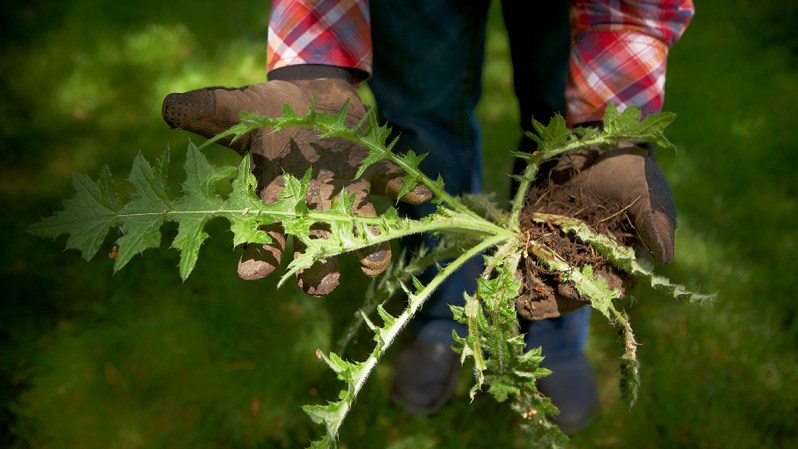
Assuming your grass is healthy, there’s not much you need to do to prep it for winter; as it gets colder and colder, it will simply stop growing and pretty much take care of itself. Make sure never to trim more than 30% off the blades when you mow, especially as it gets colder and the growth slows. Seed or sod any patches that need revitalization in the early autumn and remove as many weeds as you can so the grass won’t have to compete for ever scarcer nutrients and sunlight.
If the yard is heavy with thatch, remove as much of it as you can, and of course, rake away leaves and other debris as needed. Also consider broadcasting a high-potassium fertilizer in the mid-autumn, too.
Shrubs, Bushes, and Hedges
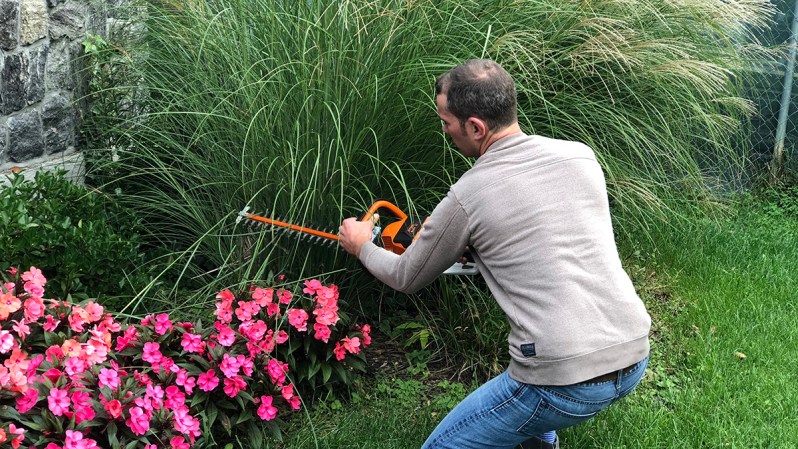
Before the first freeze, trim your shrubbery, bushes, hedges, and other such plants down as needed, removing excess growth, dead or dying branches or brambles, and make sure their trunks and roots aren’t being choked by weeds. Then spread a few inches of mulch around their beds, leaving a ring of exposure right around the actual trunks.
And for deciduous shrubs or coniferous shrubs that are frail due to youth or ailment, consider adding some protection, such as a burlap wrap or even a physical structure built over the plant to protect against snow load and cold, harsh winds. The last thing you want come spring is a bunch of windburnt bushes.
Trees
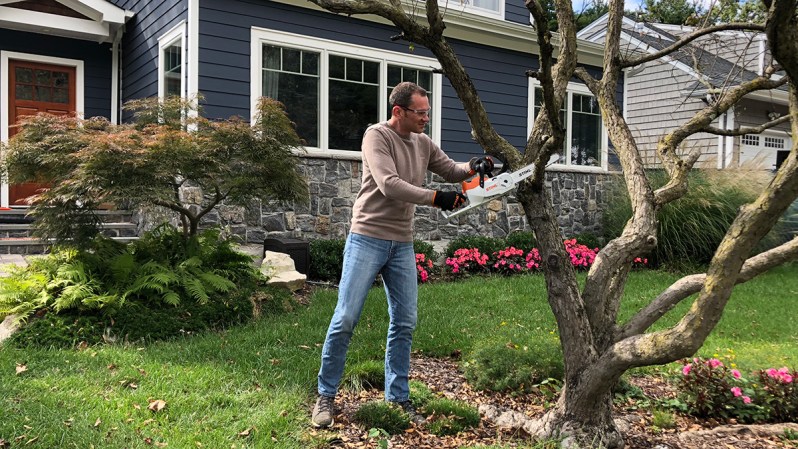
Pruning the dead or dying branches off trees is a good idea in any season, but it’s especially important to do before winter. The less energy a tree needs to devote to compromised limbs, the better. And while trimming dead branches is good for the tree, it can also be good for your home, your cars, and you and other humans: dead branches loaded with snow or ice can snap off and fall, potentially causing damage or injury, especially in an ice storm.
Before your trees go dormant, make sure to water the roots well if it has been dry in your area in the late summer and early autumn. And consider mulching around the trees to protect the roots just like you did with the shrubs.
And even in winter, if it’s not raining, you should water your trees once or twice a month. Snow gives trees much less water than you might expect, so wait until a day with temperatures over 40 degrees, even if it has been snowy, and give the roots some gallons. No need to water the grass, though, if it has snowed (or rained) regularly.
Final Thoughts
As much as possible, leave it alone. Once you’ve done the yard winterizing checklist laid out above, try to stay off the grass when it’s freezing, don’t touch the trees or bushes or beds under the snow, and generally enjoy the property more with your eyes than with your body.
And for all your other seasonal home maintenance needs, check out this season by season guide to getting it all done.



